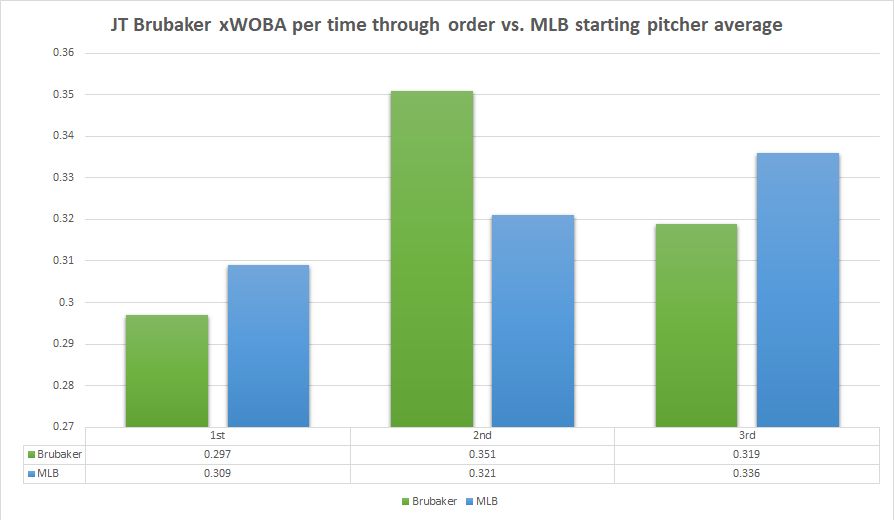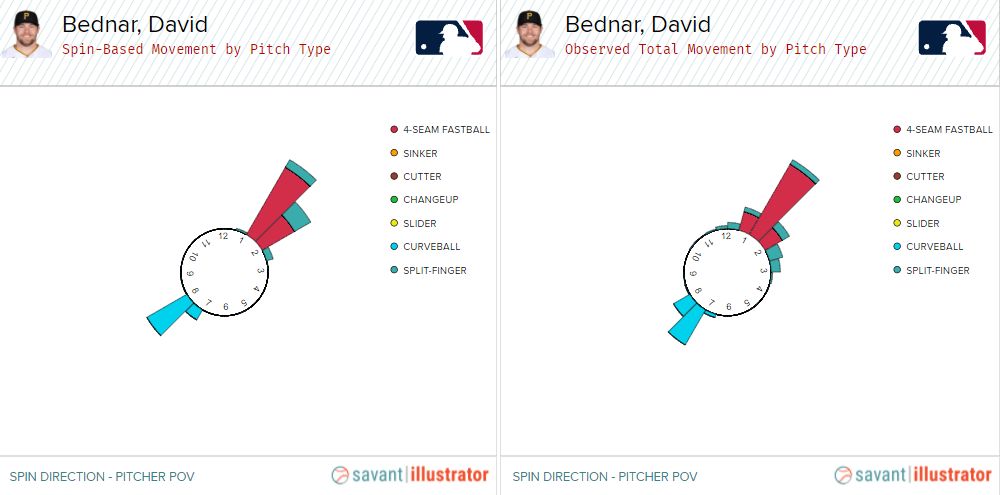I wrote a lot about Pirate pitching in 2021, especially in Mound Visit. Even though they finished the year with a 5.08 ERA, the third-worst in baseball, I found the group to be more compelling than the hitters, by and large. Compelling doesn't necessarily mean good. If Mitch Keller tossed a gem, that was the big news story of the day. If he got shelled, that would also be the big story.
For the most part, I wrote or podcasted about everything I wanted to say, but there were some final thoughts I wanted to get out there on a handful of key pitchers going forward. It’s one thing if Trevor Cahill or Chase De Jong gets lit up. They’re not part of the long-term plans. It’s the success of a handful of pitchers will most likely determine pitching coach Oscar Marin’s fate and how this rebuild will get started.
Here are some final takeaways on some of those pitchers that fall into the latter category.
JT BRUBAKER
For a couple months, it looked like Brubaker was on the cusp of breaking out. Through the end of June, he had made six quality starts over his 14 games pitched. A couple of bad outings inflated his ERA to 3.82, but his peripherals and spin were encouraging and he was challenging hitters. For a pitcher in his first full year in the majors, that’s more than enough.
But the flip switched in July. He would have just one quality start over his final 10 outings, pitching to a 7.91 ERA with 15 home runs allowed over 46 ⅔ innings.
The Pirates didn’t want to shut him down for the final part of the season, seeing the value in crossing the finish line, but a shoulder injury did end up limiting him to just one start in September.
Wrapping up this season, the message to Brubaker was to try to build that arm up to handle more innings, because fatigue did seem to play a role in his decline.
“One of the things we’ve told Bru is… what it takes to be an everyday, maybe a 200-inning starter,” Marin said during an end of year Zoom call. “That’s really focusing on his body, focusing on his strength, so that he’s able to hold his stuff for as long as he possibly can, because he does have great stuff. We just happened to see a little trend of dropoff from the beginning of games to the end, and that’s something we need to address with him physically. With his mindset, he’s definitely going to be able to do that.”
Brubaker did drop off results the deeper he went into games. By now just about every fan with even a perfunctory interest in analytics knows that pitchers have worse results the deeper they go into games, based on the number of times they have gone through the order. Brubaker was no exception, but with him, the real spike is that second time through the lineup. Here are his expected wOBA marks (based on quality of contact, strikeouts and walks) based on how often he had seen that hitter that day:

Brubaker’s a bit of an outlier here, posting better results for that third trip, but that could probably be chalked up to him being pulled before then in games he’s struggling and being given more leash in games where he’s rolling. When Brubaker is pitching well, he can normally escape those first nine hitters without much damage. It’s that second time through the starting nine that normally determines how his night would go.
With the fastball, it was usually determined that first time through. Through June, hitters had a .283 wOBA and .263 xWOBA on his fastball the first time through the order. Both are well better than the league averages of .343 and .344, respectively. From July on, however, hitters had a .356 wOBA and .375 xwOBA in their first at-bat against him. That set the tone on a poor note.
Brubaker is turning 28 next month, but there’s still plenty of time for him to build up arm strength, especially considering injuries cost him nearly all of 2019 and then 2020 was a shortened season. This year was the first time since his minor-league pitcher of the year campaign in 2018 that he made a dozen appearances. Marin’s hope for 200 innings is probably more of a far off goal than an achievable one, but Brubaker still can give quality innings out of the rotation if he could improve during his second trip through the order.
MITCH KELLER
Like I said, I wrote about Keller all year long. A lot more than I intended, honestly. It was a very up and down year for him, and as the season progressed, he did show some improvement, at least in terms of results and composure on the mound. Stuff wise, he was trending down towards the end of the season:
-original.jpg)
That was until the last game of the season, when the velocity did tick up again. Not to where it was earlier in the year or in 2019, but enough that it was noticeable. That was attributed to some tweaks Marin challenged him to make for that final start, including lengthening his arm swing to make it “as whippy as possible,” as Keller put it.
“It felt really good, and that’s kind of where I need to be to be my best,” Keller said after his final start. “You saw it today. My velo was up more than it had been in my last probably four or five starts, so definitely positives and just going from there.”
“It feels really good, having confidence going into the offseason and knowing that’s the way I need to move my body and that’s the way I need to work,” he added shortly after. “I think if I continue to do that, I’ll have a lot more success.”
When Keller was demoted in June, I did a deep dive Mound Visit on his first stint in the majors this year, focusing on his arm slot and his release depth. It was shorter in 2021, and I theorized that was contributing to his pitches not performing the way they used to. Having Keller focus on lengthening his release signals that Marin had a similar thought.
It’s just a start, a three inning one at the end of the season at that, but it could end up being one of the more important starts of Keller’s career.
DAVID BEDNAR
When the Pirates traded for Bednar, they were drawn to his plus fastball and an intriguing splitter. The curveball was definitely the third offering, getting only an average amount of spin while having a tendency to leave too many over the heart of the plate.
Going back to spring training, Bednar said he felt he was getting a better feel and cutting down on those mistake pitches. The results obviously showed that spring, and after the trade deadline, he became one of the go-to guys at the backend of the bullpen. As the calendar turned to August, he looked like a legitimate three-pitch reliever.
Then something interesting happened. He became a two-pitch pitcher, and the second offering wasn’t the splitter:
-original.jpg)
The curveball took over, throwing it As Marin put it, “his third pitch became his second-best pitch offering.”
“I think that was a big difference-maker for him,” he continued. “You’re talking about pitch metrics and what tunnels with each other. That high-velocity fastball to the top of the zone combined with that curveball coming off it, I think that was a big plus for him.”
Bednar’s four-seamer and curve can definitely tunnel off of each other, especially when it’s dropping:
David Bednar, Filthy Curveballs. 😷
— Rob Friedman (@PitchingNinja) September 6, 2021
And sword. ⚔️ pic.twitter.com/S2G3AIEwop
And its spin mirrors not only the fastball, but the splitter as well:

It’s a good pitch on its own, but when paired with those other two, or even just the four-seamer, it helps all of his stuff play up. And while there is always small sample size risk when analyzing relievers, in those final two months after the repertoire change, Bednar struck out 27 over 19 ⅔ innings with only two runs allowed.
Bednar could go into 2022 pegged as the Pirates’ closer. He succeeded with and without that third pitch in 2021. Were these last two months a fluke or is Bednar transitioning into that two pitch guy?

